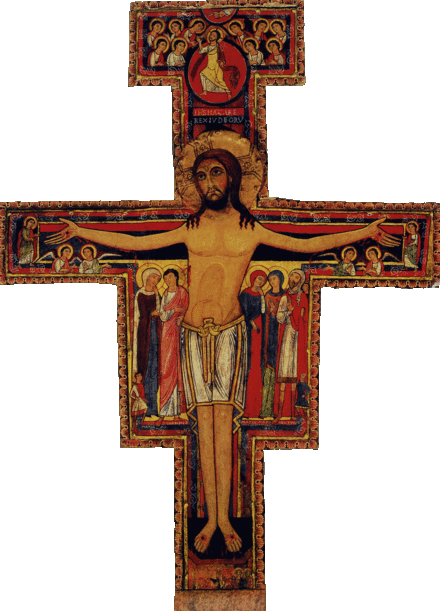The difference(s) between “The Way of the Cross” by St. Francis of Assisi and by St. Alphonsus Liguori?
Before going into this post, I would like to point out that both St. Francis of Assisi and St. Alphonsus Liguori had very deep devotions to to the Passion of Christ and this spilled out into their intimate spirituality of Jesus Crucified.
St. Francis of Assisi was traditionally only a deacon and the first official stigmatized saint. Great was his devotion to the Passion of Christ. One day he heard the Lord telling him to ”Rebuild My Church“:
“One day when Francis went out to meditate in the fields he was passing by the church of San Damiano which was threatened to collapse because of extreme age. Inspired by the Spirit, he went inside to pray. Kneeling before an image of the Crucified, he was filled with great fervor and consolation as he prayed. While his tear-filled eyes were gazing at the Lord’s cross, he heard with his bodily ears a voice coming from the cross, telling him three times, ‘Francis, go repair my house, as you see, it is falling into ruin’” (Life of St. Francis, St. Bonaventure).
St. Alphonsus Liguori equally had a tremendous devotion to the Christ Crucified and the founder of the Congregation of the Most Holy Redeemer also known as the Redemptorists.
The two forms of the Way of the Cross are encouraged by Holy Mother Church. The Franciscan form is not only older, it is considered the traditional Way of the Cross. In fact up until Vatican II, the erection of the Fourteen (14) Stations of the Cross was reserved to be erected by Franciscan Friars only: Ritus Erigendi Stationes Viæ Crucis Proprius Ordinis Minorum Pages 242-246.
The Way of the Cross of St. Francis flows out from a Franciscan spirituality.
The Way of the Cross according to St. Alphonus follows a Redemptorist spirituality which in it’s more liturgical flavour which can be see as it has the Stabat Mater impregnated in this devotion. The Stabat Mater if also recited in the blessing of the erection of the Stations of the Cross.
The Stabat Mater is a 13th-century Christian hymn to Mary, which portrays her suffering as Jesus Christ's mother during his crucifixion. Its author may be either the Franciscan friar Jacopone da Todi or Pope Innocent III.The title comes from its first line, "Stabat Mater dolorosa", which means "the sorrowful mother was standing". The the Patroness of the Redemptorists is the Blessed Virgin Mary under the title "Immaculate Conception," of which St. Alphonsus was the strong propogater even before Marian Dogma was officially promulgated.
The hymn Vexilla Regis is also recited in the blessing of the erection of the Stations of the Cross.
In areas with a Franciscan Influence will probably use the Franciscan form of the Way of the Cross; while parishes that have a great Marian devotion may tend to say the Stations of the Cross of St. Alphonsus Liguori.
In any case, both form are to be encouraged.

